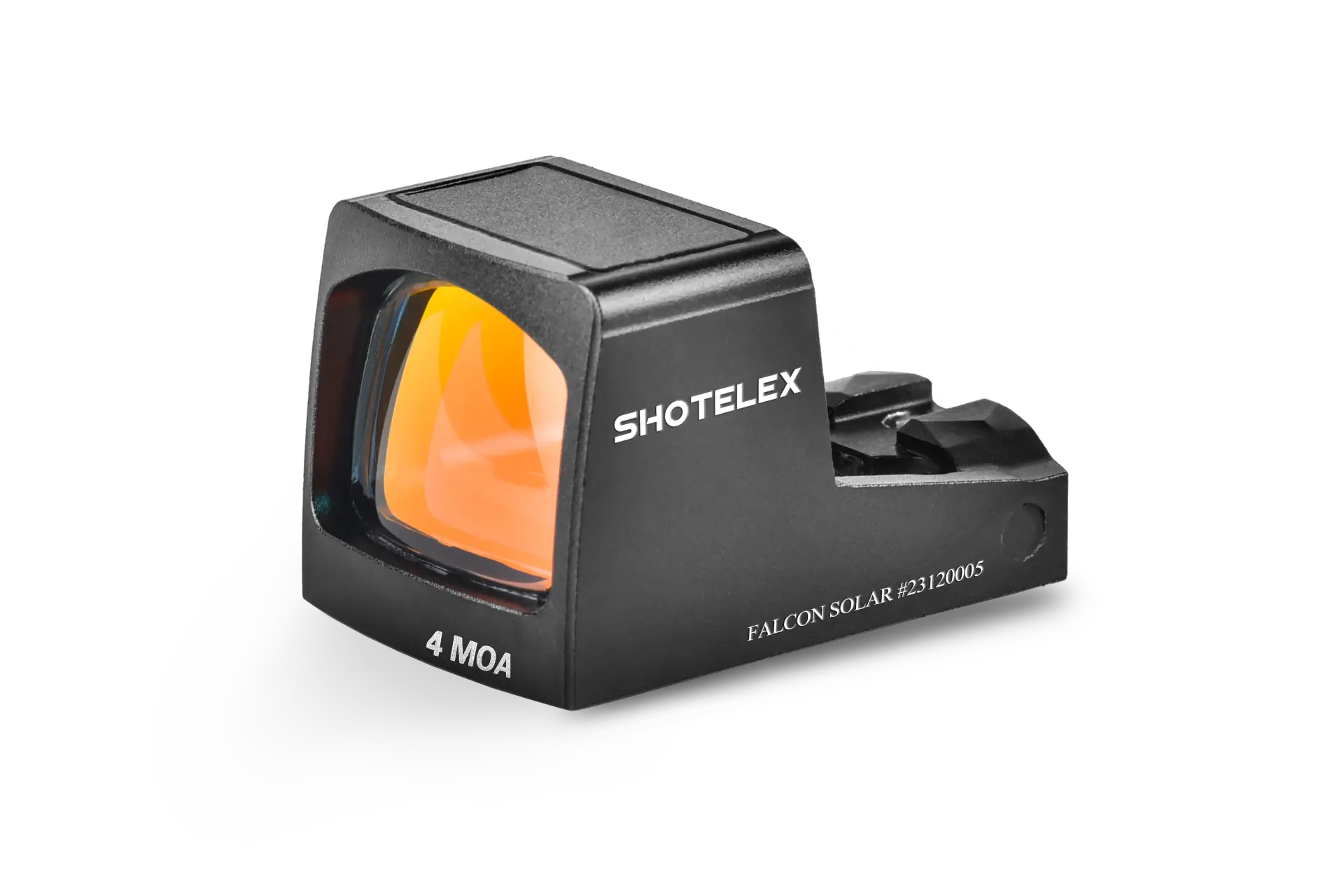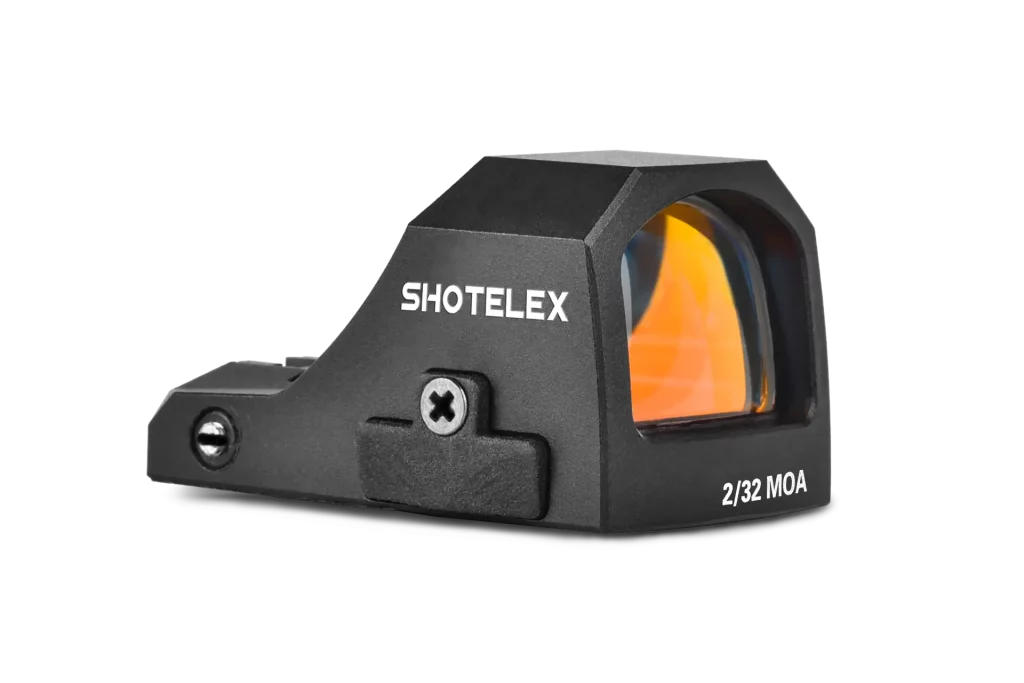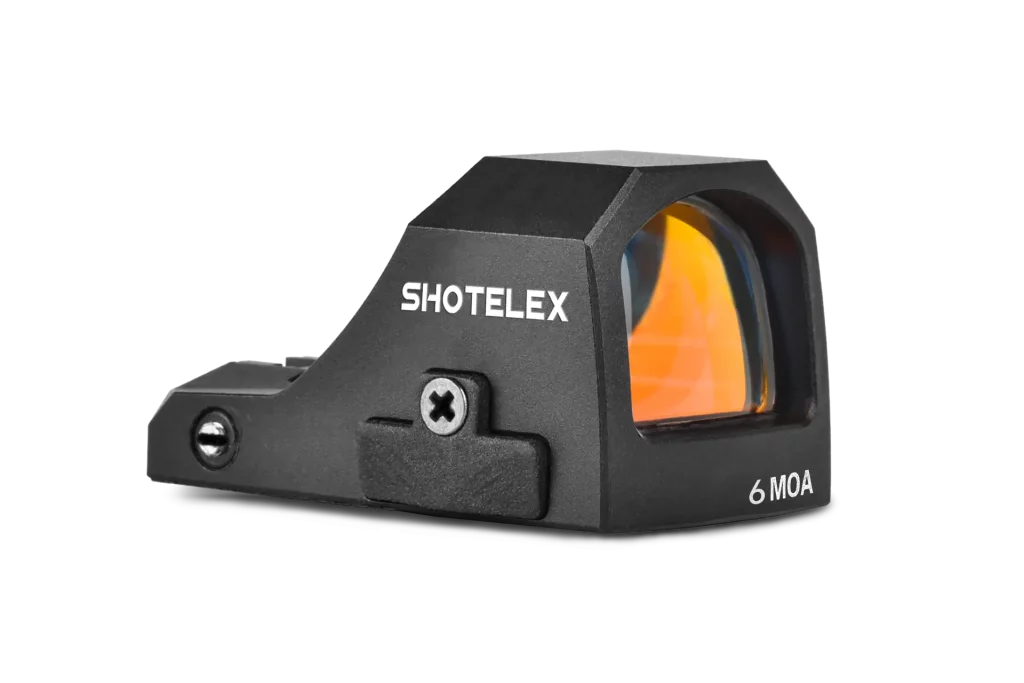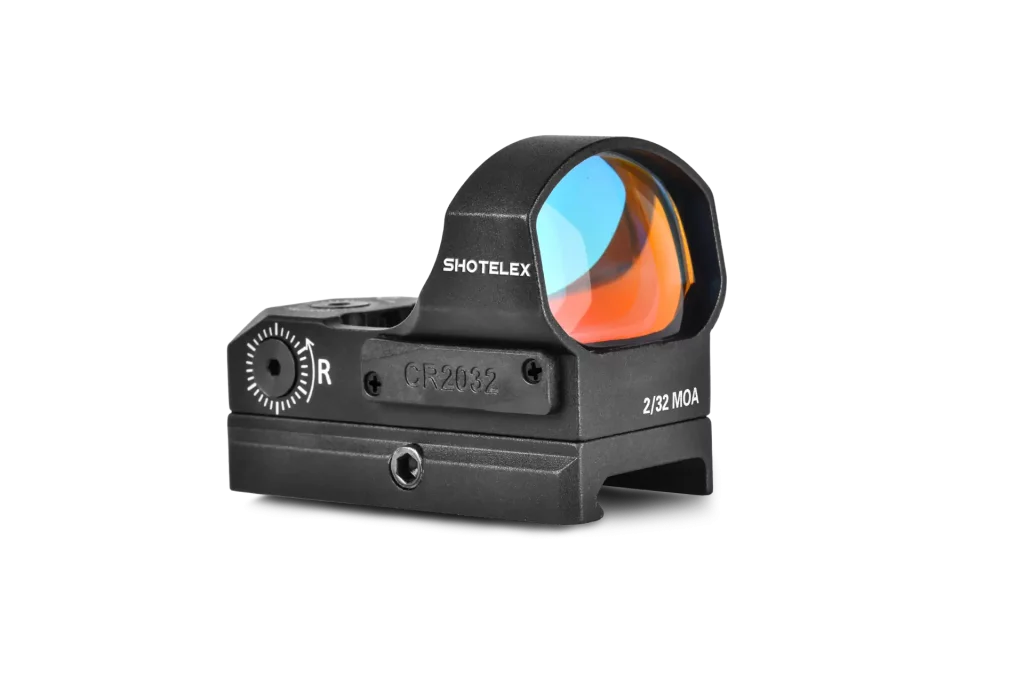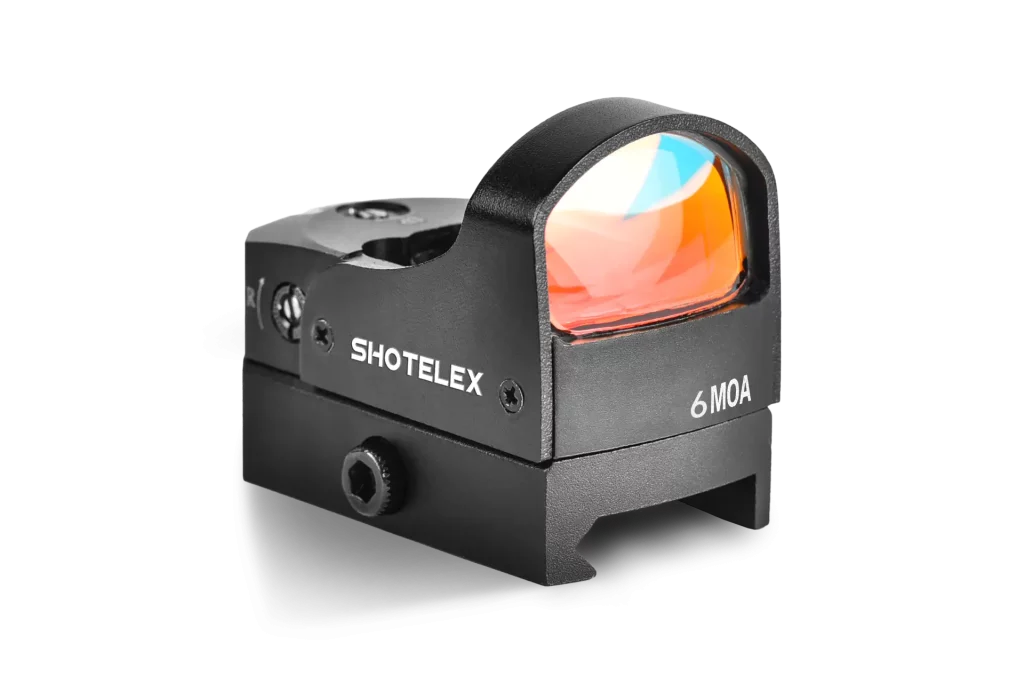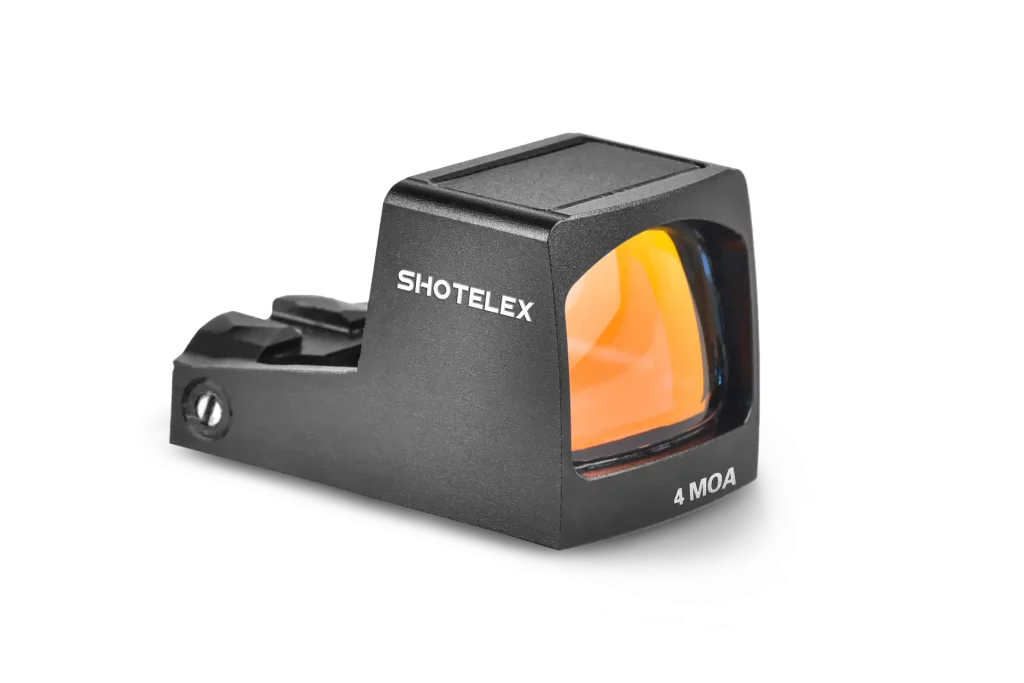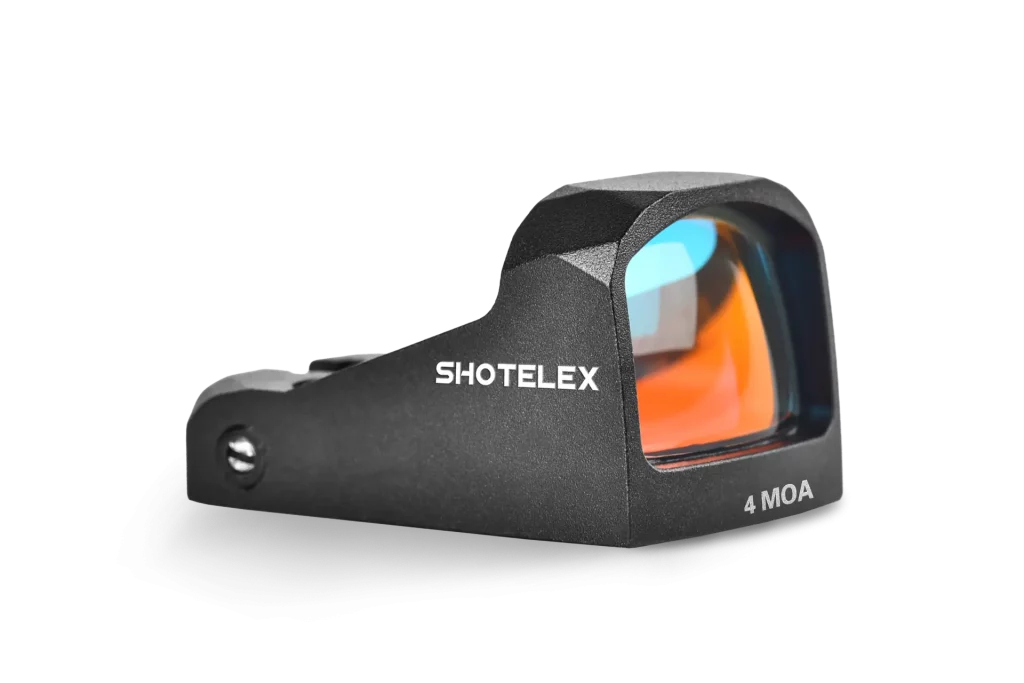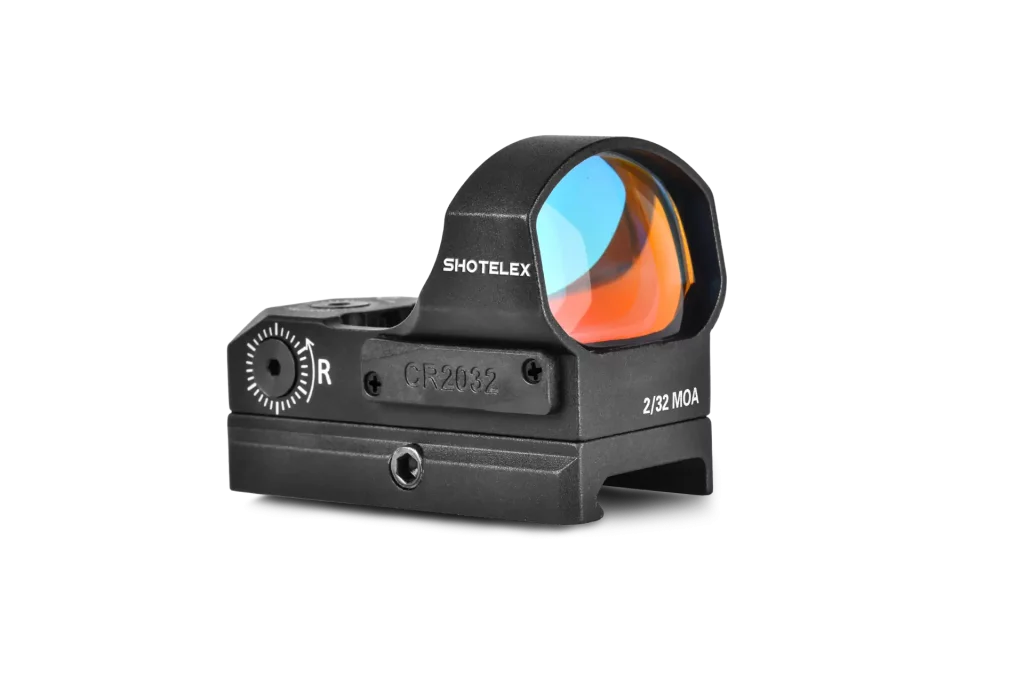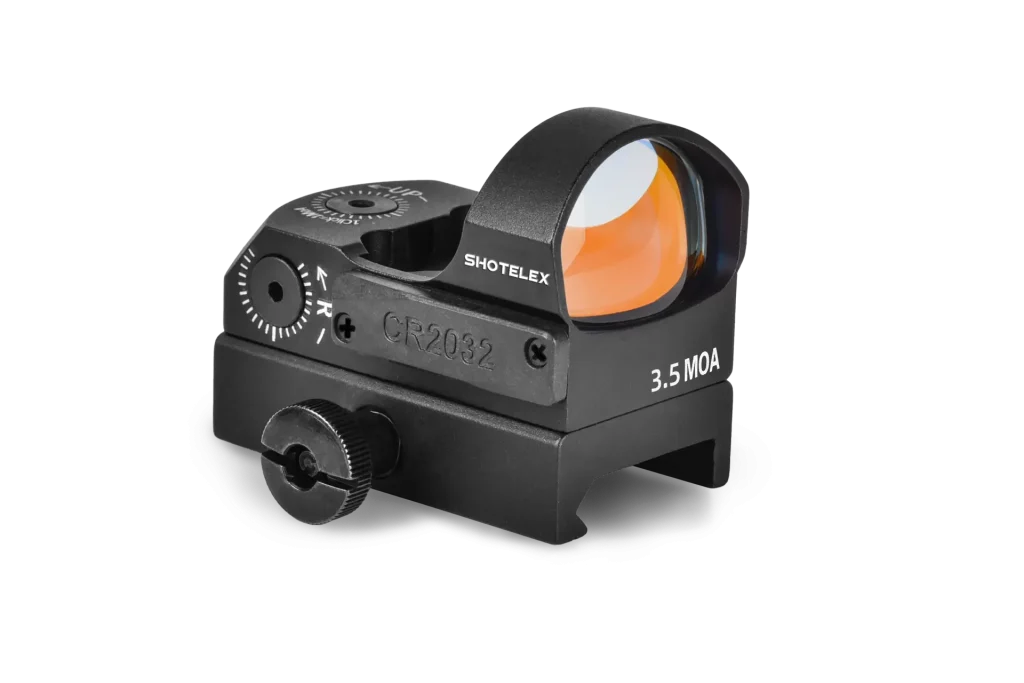What is a Red Dot Sight?
A red dot sight is a specialized, non-magnified optical aiming device designed to improve target acquisition speed and accuracy. It works by projecting a bright, illuminated dot—usually red but sometimes green—onto a specially coated lens, creating a precise aiming point for the shooter. This dot appears to float in the shooter’s field of view and remains aligned with the firearm regardless of eye position, allowing for fast and intuitive aiming. Unlike traditional rifle scopes, which use magnification to bring distant targets closer, red dot sights prioritize speed and situational awareness by offering an unobstructed view of the surrounding environment. This makes them particularly effective for close to medium-range engagements in hunting, tactical operations, and competitive shooting. Their simple, parallax-free design ensures that as long as the dot is on the target, the shot will be accurate, making them a popular choice for firearms such as rifles, shotguns, and even handguns.
Key Features of a Red Dot Sight
- LED Light&Reticle – Red dot sight used an LED(Light Emitting Diode) to project a reticle (dot or pattern) onto a lens, allowing for fast target acquisition.
- Elevation – Controls the vertical(up/down)point of impact, properly zeroing elevation ensure your shots hit where the dot is aimed.
- Windage – Controls the left/right(horizontal) point of impact, properly zeroing windage ensures your shots align horizontally with the dot.
- Screw Mount – It is the primary method of attaching a red dot sight to a firearm. Proper installation ensures stability, zero retention, and reliability under recoil
- Sun Shade – A sun shade is a cylindrical tube attachment that reduces glare and improves visibility in bright sunlight. It’s especially useful for long-range shooting, desert environments, or backlit scenarios.
- Objective – The objective lens is the front glass element of a red dot sight, responsible for gathering light and transmitting the reticle image to your eye. Unlike magnified optics, red dots have simple objective lenses optimized for fast target acquisition.
- Body Lock Screw – The body lock screw (or housing lock screw) is a critical but often overlooked component in red dot sights. It secures the optic’s internal housing to prevent shifting under recoil, ensuring zero retention and long-term durability.
- Reticle Lock Screw – The reticle lock screw (sometimes called the windage/elevation lock screw) is a small but crucial feature found on some red dot sights. It prevents accidental adjustments to your zero after recoil or rough handling.
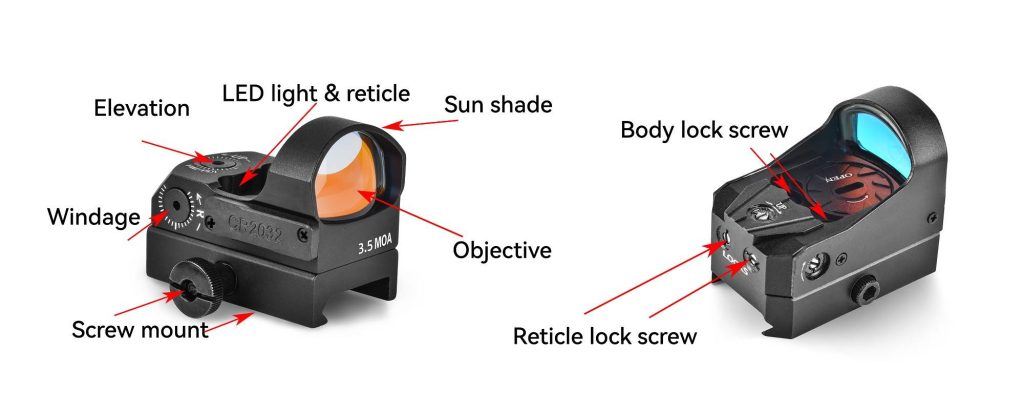
Types of Red Dot Sights
| Type | Description | Advantages | Examples |
| Tube-Style (Reflex) | Enclosed design with a cylindrical housing. | More durable, resistant to harsh conditions, protects internal components from debris and weather. | Aimpoint PRO Holosun 403R |
| Open Reflex (Holographic) | Features an open window for aiming instead of an enclosed tube. | Wider field of view, faster target acquisition, commonly used by military and law enforcement. | EOTech HWS |
| Pistol Red Dots | Compact, lightweight optics designed primarily for handguns. | Enhances aiming on handguns, can also be mounted on rifles for lightweight setups. | Trijicon RMR Holosun 507C |
Pros & Cons of Red Dot Sights
Advantages:
- Lightning-fast target acquisition
- Works with both eyes open
- Lightweight & compact
- Great for close-quarters (CQB, home defense)
Drawbacks:
- No magnification (bad for long range)
- Battery-dependent (unless solar/hybrid)
- Can be harder to use with astigmatism
- Some models have glare/flare issues
Best Uses for a Red Dot Sight
- Home Defense / Tactical – Fast aiming in close quarters.
- Hunting (Short Range) – Quick shots on moving game.
- Competition Shooting – Speed-focused matches like 3-Gun.
- Pistol & Shotgun Mounting – Common on handguns and tactical shotguns.

